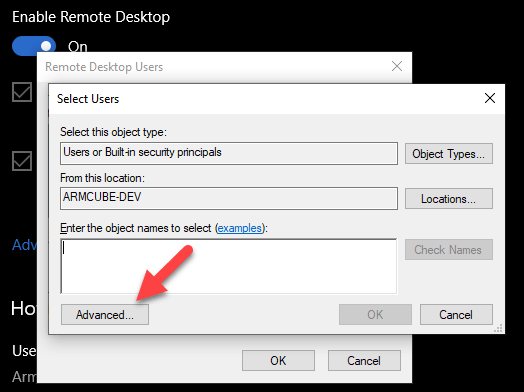
- REMOTE DESKTOP SERVICES USER MODE PORT REDIRECTOR INSTALL
- REMOTE DESKTOP SERVICES USER MODE PORT REDIRECTOR WINDOWS
Uninstall and then reinstall the Remote Desktop Session Host role service by using Server Manager. If this method does not work, uninstall and then reinstall the Remote Desktop Session Host role service. Note: You might have to restart the RD Session Host server for the changes to take effect. In Device status, make sure that the message This device is working properly appears. Right-click Remote Desktop Device Redirector Bus, and then click Properties. On the Action menu, click Scan for hardware changes.ġ0. After the registry subkey is imported, start Device Manager, expand System devices, and then click Remote Desktop Device Redirector Bus.ĩ. If the User Account Control dialog box appears, confirm that the action it displays is what you want, and then click Yes.Ĩ. reg file that you created in the previous step.Ħ. On the RD Session Host server that is having the problem, double-click the. reg file to the RD Session Host server that is having the problem.ĥ. Right-click RDPDR, click Export, and then save the. Locate the HKEY_LOCAL_MACHINE\SYSTEM\CurrentControlSet\Enum\Root\RDPDR registry subkey.Ĥ. To open Registry Editor, click Start, click Run, type regedit, and then click OK.ģ. On a working RD Session Host server, open Registry Editor. Before making changes to the registry, you should back up any valued data.ġ. To perform these procedures, you must have membership in the local Administrators group, or you must have been delegated the appropriate authority.Ĭaution: Incorrectly editing the registry might severely damage your system. To resolve this issue, use either of the following methods. If copying the Rdpdr.sys file does not resolve the problem, the RDPDR registry subkey may be corrupted. On the RD Session Host server, click Start, click Run, type expand source destination, where source is the path to the file that you want to expand on the installation disk, and destination is the path to the location where you want to save the file, and then click OK.

By default, this folder is located at c:\windows.Ģ.
REMOTE DESKTOP SERVICES USER MODE PORT REDIRECTOR WINDOWS
If the Rdpdr.sys file is missing or corrupted, copy the Rdpdr.sys file from the Windows Server 2008 R2 installation media into the %systemroot%\system32\drivers folder on the RD Session Host server, where %systemroot% is the folder in which the operating system is installed. In Device status, ensure that the message This device is working properly appears. Start Device Manager, and then view the properties of the Remote Desktop Device Redirector Bus. Restart the computer so that the changes take effect.ħ. Right-click Remote Desktop Device Redirector Bus, and then click Properties.Ħ. If the User Account Control dialog box appears, confirm that the action it displays is what you want, and then click Yes.Ĥ. To open Device Manager, click Start, click Run, type devmgmt.msc, and then click OK.Ģ. On the RD Session Host server, open Device Manager. To enable the Remote Desktop Device Redirector Bus on the RD Session Host server:ġ.

To perform this procedure on the RD Session Host server, you must have membership in the local Administrators group, or you must have been delegated the appropriate authority. To perform these tasks, refer to the following sections.Įnable the Remote Desktop Device Redirector Bus

If the problem persists, replace the RDPDR registry subkey. If you cannot enable the Remote Desktop Device Redirector Bus, replace the existing Rdpdr.sys file. To resolve this issue, enable the Remote Desktop Device Redirector Bus. Resolution steps for the following event IDs: 1103, 1100 To resolve this issue, check the event ID, and then view the troubleshooting information for that event in the sections below. This unit monitor does not contain any causes.
REMOTE DESKTOP SERVICES USER MODE PORT REDIRECTOR INSTALL
You can either install a matching printer driver on the RD Session Host server, or you can create a custom printer mapping file. If the client computer does not support this driver, the RD Session Host server looks for a matching printer driver installed on the RD Session Host server. When a user establishes a remote session with an RD Session Host server, the redirected printer will be available to applications running in the remote session.īy default, an RD Session Host server that is running Windows Server 2008 or Windows Server 2008 R2 first tries to use the Remote Desktop Services Easy Print driver. Remote Desktop Services provides printer redirection, which routes printing jobs from a server to a printer that is attached to a client computer or to a shared printer that is available to the client computer. Remote Desktop Services Printer Redirection Alert


 0 kommentar(er)
0 kommentar(er)
